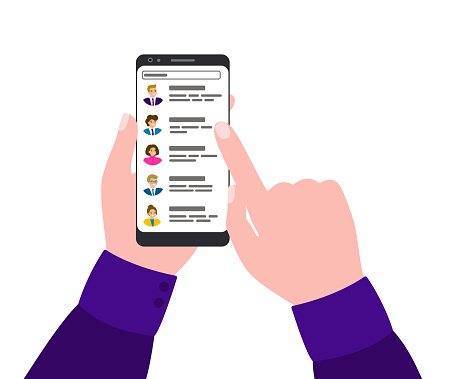
Case Study: Slack. After having applied the innovation⦠| by Keks Ackerman | Future Sensor | Medium
Case Study: Slack
After having applied the innovation methodology outlined in Post 4 to a few lesser known companies and organisations, such as CRCLR or The Wellbeing Project, I am now turning to a series of studies of widely known tech companies in order to understand the values that underlie them, as well as the dynamics that they enforce. In the first post I will explore the communication tool Slack.
Follow
Mar 29, 2019 · 9 min read
I will attempt to parse the initial impulse of the company from their current manifestation. Through this process we can see if the end product transmits the original idea of the founders. This process will also help us understand if the company is truly innovative in its work. Perhaps the idea for the company is new and exciting, but during the process of implementation the idea is reduced to a repetition of existing habits in life, business, or consumer behaviour. The innovation that I look for does not always mean entering the yellow level on the AQAL chart (check Part 2 and 3 for details), it could also mean elevating an orange system to a green system. This elevation from orange to green affects a systematic change, even if it doesn’t embrace a fully sustainable and holistic model.
From my perspective, each manifestation in life is a representation of people’s beliefs, needs, and experiences. By investigating the values, assumptions, and drives of these companies — companies that create products we use every day — we gain a deeper understanding of our culture. We begin to see this culture as an evolving system, and perhaps become more aware of our own place within this movement.
SLACK — Description
Slack is a direct messaging tool for organisations aiming to eliminate emails and humanise company communication. The product is designed as a real-time messaging system that allows people to communicate with their team as if they are all in the same room. It is organised into themed channels, and threads help to eliminate clutter and side conversations.
Impulse
Slack was originally developed as an internal messaging system for CEO Stewart Butterfield and his colleagues as they developed a video game that would never come to fruition. As it became clear that the game would not succeed, the team realised that they had something special in their communications app. In this way, the impulse for Slack was not a linear development. It was born because Butterfield and his team identified its value, even though it was not their end product.
Manifestation
The company began working on the app at the end of 2012, and by march of 2013 they were using it themselves. At first, of course, the aim was not to develop Slack, but to create an epic multi-user game. However, because they had been using Slack themselves, it was clear to Butterfield and his team when the tool was working, and when it ran into problems. Butterfield knew that if Slack was to become a marketable product, they needed to test the system in larger teams with different interests and goals. So, they expanded slowly. First, they gave access to 10 small companies that they knew well. Progressively, they shared Slack with larger and more various types of teams.
The initial round of user feedback set the tone for one of Slack’s greatest successes, and what Butterfield claims is the heart of why Slack has become one of the fastest growing companies in Silicon Valley. They analysed user feedback with minute care and implemented and improved features to address the comments and complaints from Slack’s users. As Slack grew, they kept user feedback as their main focus.
After the company’s official launch, they continued to take user feedback seriously. “We will take user feedback any way we can get it. In the app, we include a command that people can use to send us feedback. We have a help button that people can use to submit support tickets,” says Butterfield.“If you put that all together, we probably get 8,000 Zendesk help tickets and 10,000 tweets per month, and we respond to all of them.”
Influence internally vs. Influence externally
Slack reports to be very conscious of two things: the product they sell and the culture inside their company. Of course, company culture is important in any organisation, but if your product is organised, efficient, and transparent communication, you run the risk hypocrisy if your internal culture is lacking or unstable. Slack has capitalised on this realisation and follows three mantras which help define its culture:
1. Work hard and go home.
2. Speak with purpose and speak well.
3. Encourage empathy and diversity.
The first is self-explanatory. The company emphasises 6–8 hour work days and values their employees personal lives enough to keep out of them. The second statement focuses on voice and language. Slack has developed an internal style guide which helps people communicate with courtesy and clarity. The third, diversity and empathy, speaks to the diverse groups and teams who use Slack as a product. Slack emphasises that each team is unique and made up of individuals. Slack knew from the beginning that if their company didn’t reflect those users, they wouldn’t know how to create a product which catered to their needs. Again, when your product is communication, understanding who is using your product and what their needs are is vital. Because they recognised this as a core value, Slack is one of the most diverse companies in Silicon Valley: its workforce includes a high and growing percentage of women and underrepresented minorities, recruited through unusual channels and a blind interview process.
The influence of Slack from an external perspective is more complex. The company provides a valuable service which aids communication and responsiveness, as well as fixing the problem of slow, cumbersome, and unorganised email.
However, the very fact that Slack runs as a real-time messaging system can add to the mental clutter which many find overwhelming and exhausting. Because we can see whether or not someone is online we expect fast answers to problems which might warrant more thought. People feel pressured to give quick responses, even if they should wait and consider. Thus, the level of discussion or complex thinking that a topic might deserve within a team is greatly reduced.
This fast response time also creates an atmosphere of distraction. For example, I might get a message from a colleague which only needs a yes or no answer, so I feel obliged to respond so that they can get on with their day. However, this quick distraction, especially if it is repeated many times throughout the day, makes it difficult to enter a state of deep focus.
This problem is exacerbated when working across different time zones. It is easy to wake up in the morning to a stream of information. In order to find relevant info, one must sift through hundreds of messages. Threads help minimise side chatter but many report feeling a sense of anxiety that they might be missing something important, or an inability to keep up at work.
This exhaustion and mental overload is a widespread symptom of digitisation and the increasing change and flexibility in the workplace. However, it is important to remember that this exhaustion is a symptom of our current implementation of digitisation, and not something which is linked to digitisation as a necessity.
Another Possibility: Twist
Amir Salihefendic, the founder of Doist, put this problem well,“it (overload) is not necessarily a problem with Slack as a product, but with the idea of direct messaging itself”. Doist is the company behind Todoist and Twist, two productivity apps which help with task management and communication, respectively.
Twist, Doist’s communication app, noticed the need for more asynchronous communication, and designed a product that prioritized calm and thoughtful communication over fast communication.
When their team first started using Slack it was a revelation. They went from 30 individuals in remote locations to a team who could easily work together. However, over time, people began to develop high levels of stress and anxiety using Slack, particularly because they were located across different time zones.
With Twist, the company decided to promote a different agenda that didn’t rely on instantaneous communication. Twist incorporates many of the benefits of a tool like Slack, but integrates some key design decisions which promote Doists commitment to calm and thoughtful work. For example, on Twist there is no little icon letting your team know that you are online. This simple decision reduces anxiety regarding quick response time, and allows people to read a message, think about it for some time, and then respond with a thoughtful remark or answer. Another key design choice was to have the entire system designed around threads rather than channels, allowing ideas, projects, or topics to be easily searched and located.
Digital Dynamics
In the first series of articles I explored the theoretical framework of potential for the digital age, and attempted to map where we are coming from and where we could go. In the 2nd part I explored the digital dynamics that have emerged both in the individual as well as in cultures and companies through the implementation of digital technologies. I talked about 9 technological drivers adapted and supplemented from Kevin Kelly’s book The Inevitable (2016) which help us understand this new cultural era:
- Decentralization
- Sharing/ Collaboration
- Continuous becoming
- Flowing
- Assessing/ Open
- Tracking
- Remixing
- Cognification/ AI
- Global Awareness
The list above shows the 9 digital dynamics. A further description of them can be found in part 2. However, at the moment I will focus on the 4 emboldened dynamics which are particularly relevant for Slack. But keep in mind that, like most tech the companies, Slack does partake in all of the dynamics to some extent.
The most obvious digital dynamic is, of course, sharing and collaboration. Slack has made collaboration of teams and networks across time and space very easy.
Passing Clouds, copyright Tiago Barros Studio, 2011
As discussed above, Slack has gained much of its success from customer feedback. Learning from open sourced platforms like Wikipedia, the Slack team adapted that model to fit their own needs. So, while the product or content is not directly built by users, it is the users feedback which give direction to the product’s growth. This blurs the line between consumer and producer, creating a new category which is becoming ever more present ‘prosumer’. This new category, which collapses a previously firm dichotomy, is a fundamental marker of decentralization. These digital dynamics often flow into one another, for example the topic of user feedback could also be discussed in light of tracking and the integration of user data.
Lastly, Slack has a very interesting relationship to what is called the flowing state. This state is a kind of psychological space in which people experience a deep focus and connection to a greater whole. In one sense, Slack enables this state by creating a fluid space for communication. It gives the impression that all of your colleagues are immediately available and present, no matter the distance or time. We suddenly feel connected to other people regardless of barriers which were previously insurmountable. However, Slack can also severely limit our ability to enter this flow state because it presents constant distraction. If our phone is always pinging with notifications and questions it is difficult to focus on the project at hand.
Future Thoughts and Questions
If Slack wants to move into the future with a sustainable and holistic model, what are some of the questions or concerns that they need to address?
- How is Slack changing the way we work? In the AQAL image, we would ask how Slack is integrating the inner quadrants of both individuals as well as collectives.
- What is instant messaging doing to our inner lives? How does it affect levels of anxiety and isolation?
- Does Slack promote good, useful, and thoughtful communication in a workplace?
- Slack is a very strong promoter of asap culture — what are the long term effects? Burnout? Absenteeism?
- Does Slack create a space in which communication over time zones is feasible without people experiencing high levels of anxiety?
Slack on the AQAL
Graphic by Keks Ackerman, licensed under CC BY-NC 2.0, based on Ken Wilber’s AQAL and Don Beck’s Spiral Dynamics
In the next post of this mini-series on tech companies, I will be looking at Airbnb.
As far as necessary, all rights to the images used here have been clarified with the artists or producers. For some images I have paid a small amount of money. For others I made a donation to non-profit projects in agreement with the artists. However, most of the creators agreed that their works are used here free of charge. I’d like to express my gratitude to all of them.
Future Sensor
A vision for a systemically healthy future which we as…
Follow
54
54
WRITTEN BY
Keks Ackerman
Follow
Keks Ackerman is a metamodern writer, and entrepreneur, building a systemically healthy society and economy.
Future Sensor
Follow
A vision for a systemically healthy future which we as innovators, entrepreneurs and policy makers can turn into reality.










